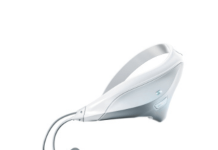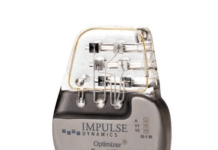Lumicell today announced it received FDA approval for its LumiSystem direct visualization system for breast cancer removal.
According to the company, the LumiSystem allows surgeons to scan the breast cavity post-lumpectomy in real time to detect and resect residual cancer that could have been missed with 84% diagnostic accuracy. The LumiSystem with the company’s LumiSight optical imaging agent is indicated for fluorescence imaging in adults with breast cancer as a supplement for the intraoperative detection of cancerous tissues within the resection cavity after removing primary specimens during lumpectomy surgery.
Related: Adherium’s Smartinhaler gains clearance for use with AstraZeneca devices
“We are immensely proud of the dual approval of LumiSystem and Lumicell DVS – we believe this is the first drug-device combination product approved in over a decade to have followed both of the FDA’s most stringent NDA and PMA review processes,” President and Chief Operating Officer Howard Hechler said in a news release. “With the FDA’s approval, LumiSystem is now the first and only imaging combination product capable of detecting cancerous tissue where it matters most, inside the breast cavity.”
The average risk of a woman in the U.S. being diagnosed with breast cancer in her lifetime is about 13%, according to the American Cancer Society. In recent years, incidence rates of risen by 0.6% per year. The increase was steeper in women younger than 50 years old (1%)
Breast cancer is also the second leading cause of cancer death in women. There is a 2.5% chance of someone dying from breast cancer. However, breast cancer death rates have been decreasing steadily since 1989, with an overall decline of 42% through 2021, the American Cancer Society reported.
“Breast cancer is all too common, and sadly, 1 in 8 women will develop it during their lifetime,” Dr. Kelly Hunt, chair of the department of breast surgical oncology at MD Anderson Cancer Center and president of the Society of Surgical Oncology, said. “Our most common surgical procedure to treat these women is lumpectomy. Unfortunately, the intraoperative tools we have are limited and do not identify the extent of tumor accurately enough, making it challenging to achieve a complete tumor resection, leading to as many as 36% of patients needing a second surgery.”
Lumicell used data from more than 700 breast cancer patients across five clinical studies to assess the safety of the system. The most common side effects of LumiSight are hypersensitivity and an abnormal color in urine.
“During lumpectomy surgery, surgeons still struggle to identify and remove all of the tumor during the first operation,” Dr. Barbara Smith, director of the breast program at Massachusetts General Hospital and professor of surgery at Harvard Medical School, said. “With LumiSystem, we will now have a technology that is clinically proven to achieve a more complete cancer resection during lumpectomy that could help some patients avoid a second surgery.”






